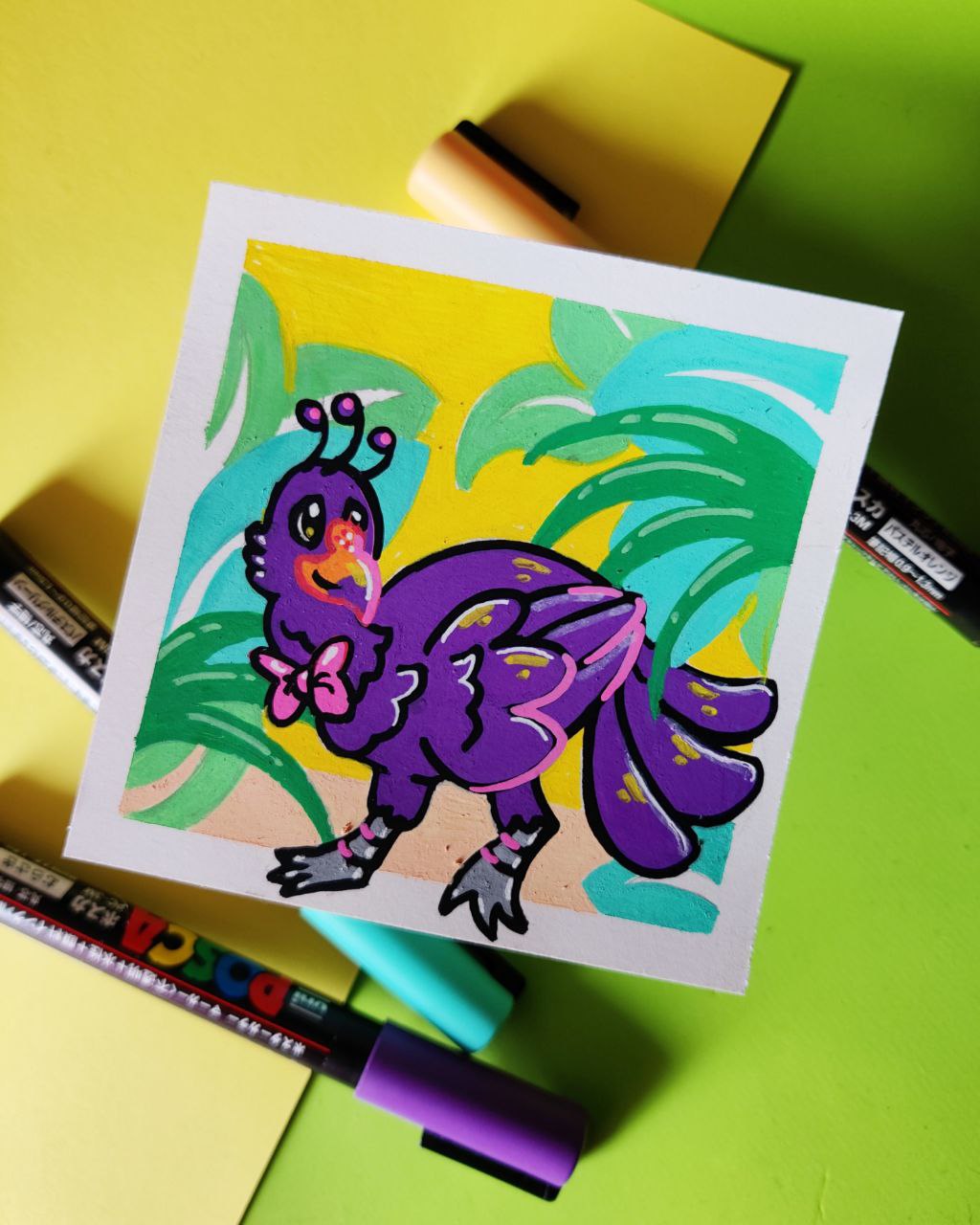Wattled Curassow
The wattled curassow (Crax globulosa) is a bird (family Cracidae) found in the western and southwestern Amazon basin, discovered in 1825. They average 7-8 pounds, about the size of a wild turkey. Wattled curassows have glossy black and white plumage, with the males having prominent red knobs and wattles. Younglings have less developed knobs in a more yellow hue. Another unique feature are their curly head crests - very expressive and used to show nervousness, aggression, etc. Their diet consists of fruits and plant matter, with the occasional small invertebrate such as fish and crustaceans. Interestingly, they have been observed to favor certain food types, unlike other curassow species. Not much is known about the wattled currassow’s breeding habits, but they have been observed to be monogamous. Their courtship ritual consists of a long whistling song from the male. They lay two eggs at a time in a crude stick-and-leaf nest, with an incubation period of 32 days. The breeding season is unknown but mated pairs are theorized to defend a territory like other curassows. The young can roost almost immediately, and become independent at around one year.
The habitat of the wattled curassow is not well known. Their range consists of Upper Amazonia through Ecuador, Peru, and Northern Bolivia. The only consistent sightings have been along the Juruá River in Brazil. They prefer drier land, being observed in the gallery forests alongside wetlands. Wattled curassows have also been observed in the terra firme rainforests in higher ground, but the assumption is this only happens when the lower lands are flooded. They seem to prefer spending time on low horizontal limbs, only coming to the ground for feeding, which furthers the difficulty of sightings. They are thought to live out their adult life close to where they were born.
The wattled curassow is endangered, rarely being found in the wild today. Their population is assumed to decline by one-third every decade. The lowland river habitat makes them more vulnerable to hunting; unsustainable deforestation has also dwindled its numbers. It is thought to be completely extinct in Ecuador. Due to how rare sightings are, there’s no confirmed population number, but its estimated that between 2,500-10,000 wattled curassows exist in the wild. This large range accounts for the species’ rarity - hidden populations probably exist (but these are not sizeable). The Brazilian area is thought to have the largest population at around 1,000 individuals. The hunting practices in its habitat mean that they likely get shot faster than they reproduce.
Unfortunately, there does not seem to be any large-scale conservation efforts for the wattled curassow. Conservation is made difficult by the hunting practices of the area and how easily accessible their habitat is. They have been sighted on the protected Mamirauá Sustainable Development Reserve, but otherwise have little legal protection. Populations do exist in captivity and breed rarely, but not enough to get their numbers up. Today, greater efforts are being made to survey their numbers, study their habitat requirements, and promote awareness of their existence and decline.
References
https://en.wikipedia.org/wiki/Wattled_curassow
https://en.wikipedia.org/wiki/Mamirau%C3%A1_Sustainable_Development_Reserve
https://www.iucnredlist.org/species/22678537/92777596
https://www.whiteoakwildlife.org/wildlife/wattled-curassow/
Submitted By Panda
for Jungle Expedition: Report
Submitted: 3 years ago ・
Last Updated: 3 years ago
